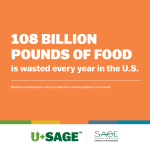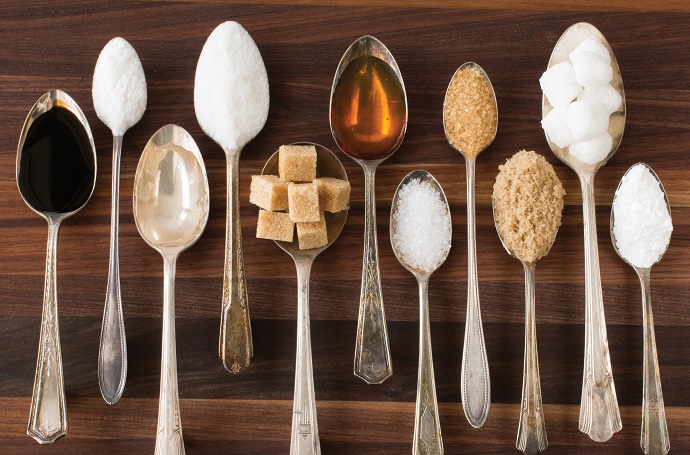If you’re paying attention to headlines about nutrition, you’ve probably heard the buzz about added sugar. For the first time, the 2015 USDA Dietary Guidelines recommend limiting added sugars (not to be confused with natural sugars) to less than 10% of the calories in your diet. For the average adult consuming roughly 2,000 calories a day, that’s no more than 200 calories—about 12 teaspoons, or 50 grams, of added sugar. That’s three percent less than the average American consumes today. The new FDA labeling laws published this past May require food manufacturers to list added sugar on the Nutrition Facts label by July 2019. Until then, it can be difficult to tell how much of the sugar in a product is natural, and how much is added.
Where Added Sugar Hides
Added sugars are added to foods and beverages when they’re processed or prepared. They’re different from sugars that occur naturally in food, like those in fruits and in dairy products. As you can imagine, the highest concentration of added sugars is seen in sweets, desserts, and sugary drinks—in fact, 47% of the added sugars in our diets come from beverages other than milk and 100% juice. They can also be found in ketchup and other tomato products, refined-grain breads, cereals, and salad dressings. Even seemingly healthy frozen organic entrees, flavored yogurts, instant oatmeals, energy bars, dried fruits, and smoothies can have a surprising amount of added sugar. Added sugars are always listed on the ingredient label, but they can be under a variety of names, including: high fructose corn syrup, white sugar, brown sugar, corn syrup, corn syrup solids, raw sugar, malt syrup, maple syrup, pancake syrup, fructose sweetener, liquid fructose, honey, molasses, anhydrous dextrose, and crystal dextrose. If you’re purchasing a snack, entree, or beverage without an ingredient list—including that daily latte—don’t feel shy about asking how much added sugar is in it, and if there’s a lower-sugar alternative.
The Sugar Addiction
According to the USDA, added sugars are often found in items that are high in calories and low in other valuable nutrients. In contrast, naturally occurring sugars are “packaged” with nutrients like vitamins, minerals, fiber, and phytochemicals. Added sugars are just sugar, without those beneficial nutrients. Ultimately, eating large amounts of added sugars can lead to overconsumption of calories, because you still need to eat other foods in order to obtain essential nutrients and feel full. It can also lead to heart disease, Type 2 diabetes, and, as we’re sure you’ve told your children, cavities. Because added sugar activates the dopamine pathways in your brain, each time you have sugar, it leaves you wanting more. A habit of indulging in high-sugar foods also makes naturally sweet fruits and veggies taste bland in comparison. This can lead to a dietary shift away from healthy, nutrient-dense foods and toward those delicious, sugary “empty calories.” It’s a difficult cycle to break.
If you’re thinking about cutting down on sugar by using low- or no-calorie sweeteners in your beverages, hold on a second. While the FDA has deemed artificial sweeteners like aspartame, saccharin, and sucralose safe for consumption based on available scientific evidence, they’re not a cure-all. They may satisfy your sweet tooth without increasing your caloric intake, but they’ll also feed into your evolutionary desire for sweetness-and contribute to the cycle of sugar cravings. Instead, begin to wean yourself off sugar by diluting sugary drinks like Gatorade® and juice, and cutting back on the sugar you add to your coffee or tea. Enjoy natural sources of sugar, like raw fruit smoothies and milk. Add flavor to plain water with fresh-cut fruits and herbs.
Spotlight on Sugar
The SAGE Spotlight Program® helps our students make informed decisions about what to eat by using a tricolor system to show nutritional value. Since its inception, the program has taken added sugars into consideration when assigning a dot color to its menu items. Foods that are high in added sugar, among other factors, usually get a red Spotlight dot. That means they should be enjoyed in moderation—either in smaller portions, or only every once in a while. Read more about the Spotlight Program here.









